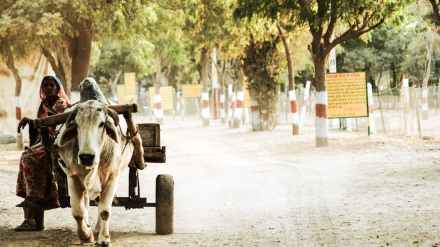One of the major reasons for the Bharatiya Janata Party’s (BJP) subdued performance in the general elections is its failure to address the concerns of rural India. The distress in rural areas is evident from the sluggish growth in consumption demand. An analysis by Motilal Oswal showed that rural consumption increased by just 0.5% year-on-year in Q2FY24, the slowest pace in eight quarters. This is not surprising because while agriculture fared reasonably well in the FY21-23 period, growing at above 4% annually, this growth sharply tapered off to just 1.4% in FY24. In fact, in Q3FY24 and Q4FY24, growth slumped to below 1%, partly due to unseasonal rains that damaged crops and impacted sowing. As such, the production of food grains for the agricultural year 2023-24, estimated at 329 million tonnes, was virtually the same as in the previous year. While GDP grew at a robust 8.2% in FY24, the farm economy languished.
Additionally, agriculture exports in FY24 fell 8% compared to the previous year; at $48.9 billion, it was well below the government’s targeted $60 billion. The neglect of rural distress, despite evident signs, is inexplicable. Government data showed that real rural wages had contracted in 25 of the 27 months leading up to February 2024. Rising inflation during the November-February period, between 7.1% and 7.5%, caused a sharp contraction in real wages. The pressure on nominal wages was partly due to the return of about 30-35 million migrant workers to their homes during the lockdowns following the outbreak of Covid-19. This reversed the structural change that had been underway between 2004 and 2019, during which the absolute number of workers in agriculture had fallen. The government needed to recognise that surplus labour would pressure wages and work to support the farm economy. Instead, it followed ad hoc policies that hurt farmers’ earnings and their disposable incomes.
There is also no denying that unemployment remains a major problem — a report in March this year flagged concerns about poor employment conditions: the slow transition to non-farm employment has reversed; youth employment is of poorer quality than employment for adults; wages and earnings are stagnant or declining. There is an urgent need to frame a comprehensive policy for the rural economy. The objective should be to boost value-added products such as poultry, fishery, dairy, and horticulture, and to provide incentives encouraging farmers to diversify beyond paddy and wheat. Producers need financial and marketing support, as well as warehousing and transport facilities. Measures to increase farm productivity and incomes are essential to enable rural households to spend more and repay their loans. While fiscal support to rural programmes helped sustain consumption during the pandemic, the allocation was reduced by 16% in the 2023-24 Budget compared to the revised estimates for FY23. Although the reduction was smaller if food subsidies are included, there should not have been any cut in the first place.
The new government must rectify this by increasing allocations to core rural sector schemes for the next five years. Structurally, to ease pressure on the farm economy, the government must run schemes to skill and train people for non-agricultural jobs. To help revive the non-farm rural economy, where construction is a significant employment generator, the government should push banks to lend to developers at affordable rates. Banks and other lenders must also support micro and small business enterprises. Without a concerted effort, rural distress will only worsen.
